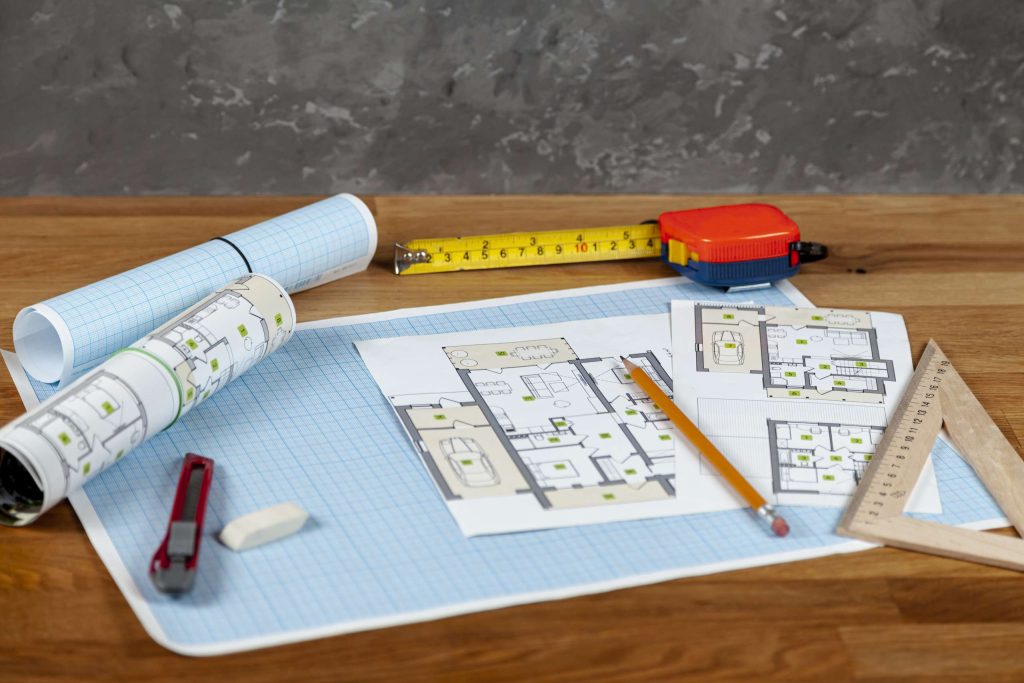The Ultimate Xactimate Estimating Guide: How to Maximize Efficiency


Efficiency plays a vital role in the world of construction projects and renovations. When estimating costs and managing assignments, Xactimate emerges as the ultimate tool. Its user-friendly interface and powerful features enable you to enhance efficiency throughout the estimation process. This comprehensive guide explores the functionalities of the Xactimate estimating service. It provides insights on how to maximize the potential of this software. Whether sending and tracking assignments or analyzing adjuster performance and industry trends, this guide equips you with the knowledge and tools to streamline your estimating process for results.
What is Xactimate?
Xactimate is a computer software system commonly used in the insurance industry to estimate construction costs. While it has gained popularity among insurance adjusters for calculating building damage, repair expenses, and settlement offers, it’s important to note that Xactimate for contractors is primarily designed for tract homes. It may not provide cost estimates for building, historical, or high-value properties.
Contractors and builders typically rely on subcontractor bids and their expertise in estimating costs and timelines for projects using Xactimate. This can put contractors at a disadvantage when negotiating settlements with insurance adjusters, especially when comparing Xactimate estimates with contractor estimates.
To ensure a settlement for property owners, it is recommended that they or their representatives obtain an estimate from a reputable licensed construction professional who is trained in providing Xactimate estimating services. This helps level the playing field during negotiations and provides an assessment of repair or replacement costs. Additionally, homeowners contractors may find it beneficial to gather subcontractor bids as supporting documentation for their estimate.
Why do Construction Estimating Companies use Xactimate?
For the past few years, xactimate estimating services have emerged as a revolutionizing tool for estimating construction projects efficiently and accurately. A wide range of xactimate experts professionals in the construction sector, like construction estimators, contractors, and insurance companies, leverage this tool, as it helps streamline the entire estimating process. It provides a comprehensive database, making it easier for professionals to generate accurate and precise estimates for various construction and restoration projects.
Accuracy And Consistency
Xactimate services provide precise estimates based on real-time pricing data and industry standards, ensuring accuracy and consistency in project planning and execution.
Time Efficiency
By automating and streamlining the estimation process, Xactimate services reduce the time required to generate detailed project estimates, leading to faster project initiation and improved timelines.
Enhanced Communication
Xactimate services foster better collaboration between all parties by providing standardized and transparent estimates, minimizing confusion, and facilitating smoother communication throughout the project’s lifecycle.
Insurance Compliance
Xactimate services help align with insurance guidelines and regulations, ensuring that estimates comply with specific policies, expediting the claims process, and avoiding disputes or rejections.
Detail-Oriented Estimates
Xactimate services enable users to create highly detailed estimates, covering material costs, labor expenses, and more, instilling confidence in clients and insurers while aiding effective resource allocation and project budgeting.
Visual Representations
Xactimate services offer visualization tools like diagrams and 3D models, presenting complex information in an accessible manner and reducing misunderstandings and misinterpretations.
Adaptability to Industry Changes
Xactimate services provide frequent updates and industry integration, ensuring that estimates remain relevant and aligned with construction and property restoration projects’ latest materials, techniques, and regulations.
How Xactimate Estimating Service Work
- Gathering Data: The Xactimate estimating service collects all the information for your project, including specifications, measurements, and material requirements.
- Utilizing Xactimate Software: The software takes this data. Utilizes it to generate a cost estimate. The software considers market prices, labor costs, and other relevant factors.
- Expert Review: The Xactimate experts carefully review the estimate to ensure its accuracy and completeness. Any necessary adjustments are made during this stage.
- Presentation: The final estimate is presented in an easy-to-understand format, ready for you to use in project planning, budgeting, and client communication.
How does Xactimate integrate with Remote Estimation?
With Xactimate’s cutting-edge integration capabilities, estimation has never been more straightforward. As a renowned construction cost estimator, our xactimate experts can seamlessly connect Xactimate with our estimation tools to streamline the claims resolution process from anywhere. This groundbreaking integration allows us to harness the power of Xactimate’s powerful estimation tool while benefiting from the convenience and efficiency of remote estimation.
By leveraging Xactimate’s comprehensive surveys, pricing tools, and data tables, we can create accurate estimates and reports without requiring manual file uploads or data entry. The integration also enables you to access highly detailed 3D models and measurements directly within Xactimate, eliminating the hassle of transferring data between platforms. With Xactimate’s integration with remote estimation, you can quickly estimate repair costs, resolve claims remotely, and provide policyholders a seamless and efficient experience.
Maximize Your Construction Estimation Efficiency with Remote Estimation
Are you struggling with inefficient construction estimation processes? Say goodbye to manual estimation and embrace the power of remote estimation for a more streamlined and efficient process. With our xactimate for contractors and expert team, we can help you save time, reduce errors, and increase accuracy in your construction estimation. Don’t let your competition get ahead – contact us today to learn more and start maximizing your construction estimation efficiency with remote estimation.
How Inaccurate Rebar Estimation Can Impact Construction Timelines


Rebar, also known as steel reinforcing bars, is one of the most crucial materials in construction projects. It is used for reinforcing and strengthening concrete structures, ensuring it can withstand heavy loads and the impact of natural disasters. Its several properties such as Strength and durability, Load-bearing capacity, etc., not only make the foundation strong but also prevent the formation of any cracks in concrete thereby increasing the lifespan of structures such as buildings, bridges, and highways.
When it comes to construction, rebar estimation is a vital process; this is where rebar estimating services come into play. This article will explore the potential consequences of inaccurate rebar estimation on construction timelines while shedding light on the crucial roles of construction estimation professionals who prioritize accurate estimation practices for ensuring smooth project execution and timely completion.
Industry standards and guidelines for reinforcing bars
One of the main organizations that sets standards for reinforcing bars is the American Society for Testing and Materials (ASTM). They have specifications for various types of reinforcing bars, such as ASTM A615 for deformed carbon-steel bars and ASTM A706 for low-alloy steel bars.
The Concrete Reinforcing Steel Institute (CRSI) is another prominent organization that provides guidelines and standards for reinforcing bars. They publish resources such as the “Manual of Standard Practice” which covers topics like safety precautions, materials handling, bar placement, and inspection.
It is worth mentioning that although these industry associations offer standards and guidelines it is the project owner or engineer’s responsibility to establish the requirements for their construction project. They can consult an expert or rebar detailing services for adhering to standards set by organizations like ASTM and CRSI along with building codes and regulations.
Importance of Accurate Rebar Estimation in Construction Projects
Rebar estimation is one of the crucial aspects in any construction project as it involves calculating the quantity, dimensions and positioning of rebar within a structure. It is crucial to have rebar estimating services to ensure that the construction project maintains its integrity, durability, and safety. If the rebar estimation is inaccurate it can have serious consequences in terms of the project timeline.
Here are the potential consequences:
- Delays in project completion: Insufficient rebar or incorrect placement can lead to delays in construction, as additional time is required to rectify the errors or order more rebar.
- Increased construction costs: Inaccurate rebar quantity takeoff or estimation can result in additional expenses, such as the need to order extra rebar or make changes to the structure to accommodate the correct rebar placement.
- Compromised structural integrity: Insufficient rebar can compromise the structural strength of the concrete, leading to potential structural failures or safety hazards.
- Rework and wastage: If rebar estimation is inaccurate, it may require rework or replacement of the rebar, resulting in a wastage of time, materials, and resources.
- Disruptions in project workflow: Inaccurate rebar estimation can lead to disruptions in the project workflow, as it may require coordination with suppliers, subcontractors, and other stakeholders to rectify the issues.
- Legal and regulatory issues: If the construction project does not meet the required rebar standards and regulations due to inaccurate estimation, it may result in legal and regulatory complications.
What are the Different Aspects of Rebar Detailing?
Rebar detailing is one of the essential processes contributing to the overall construction progress. It consists of various aspects that ensuring proper placement and configuration of the rebar, which is crucial for the structural integrity of any concrete buildings and bridges.
Here are some key aspects of rebar detailing:
- Detailed Plans and Drawings: Rebar detailing requires the creation of detailed shop drawings that specify the size, quantity, placement, and configuration of the rebar.
- 3D Modeling Integration: With advancements in technology, rebar detailing designs are often created in 3D.
- Bar Bending Schedule (BBS): Rebar detailing also involves the preparation of a Bar Bending Schedule. This schedule provides comprehensive information about the lengths, shapes, and bends required for each bar.
- Material Specification: Rebar detailing also involves specifying the type and grade of steel to be used for reinforcement. This includes considering factors such as strength, corrosion resistance, and compatibility with the surrounding concrete.
- Rebar Quantity Takeoff: Rebar quantity takeoff is a process used to estimate the amount of rebar required for a project.
- Structural Engineering Collaboration: Rebar detailers work closely with structural engineers to interpret and understand the information provided in the engineers’ drawings.
- Compliance with Codes and Standards: Rebar detailing must adhere to specific codes and standards set by regulatory bodies and industry organizations.
- Experience and Expertise: Rebar detailing requires qualified and experienced detailers who possess a deep understanding of construction engineering principles.
Rebar detailing services are crucial for the successful implementation of rebar in concrete structures. Reliable rebar estimating services ensure that all of these aspects work together to ensure that rebar is correctly installed in concrete structures, providing the necessary strength and durability for the structure to withstand various environmental forces and structural loads.
Remote Estimation: Your Reliable Rebar Detailing Service
Get accurate and timely rebar estimates for your construction projects with Remote Estimation. Our team of experienced professionals offers reliable remote rebar detailing services, ensuring that your project stays on time and on budget. Contact us today to learn more about our rebar estimating services.
Insulation Estimator’s Guide to Waterproofing And Insulation Estimating


Accurate estimation plays a critical role in the world of construction. When it comes to waterproofing and insulation, having a reliable construction or insulation estimator for estimating is crucial. They have the resources for construction professionals to help them navigate the complexities of estimating costs and materials for various aspects of a building. Professionals can ensure that your projects are financially feasible and completed on schedule. They do this by understanding their methods of estimating construction costs, like allocating costs and unit cost estimation. In this article, we will delve into the significance of estimates in waterproofing and insulation, offering insights and tips for estimation.
What is Waterproofing?
Waterproofing involves making an object or structure resistant to water infiltration. It is used in fields, such as construction, to protect buildings and materials from water damage. These safety measures are often called water resistance because they can withstand water penetration, high pressure, and moisture vapour transmission through the structure. Construction estimators play a role in assessing the expenses and resources needed for projects. Their responsibility is to ensure that suitable materials and techniques are employed to achieve waterproofing while staying within limits.
What are the Different Types of Waterproofing Materials?
Different types of materials are commonly utilized in the construction of buildings.
Cementitious Waterproofing: This method uses materials frequently used in internal areas prone to wetness, such as bathrooms. However, it is not designed to withstand weather and sunlight exposure.
Liquid Waterproofing Membrane: This particular coating offers flexibility. It transforms into a rubbery layer once it has cured. Its elongation properties are high. Depends on the type of polymer used.
Bituminous Coating Waterproofing: Also referred to as asphalt coating, this method provides both flexibility and water protection. Nevertheless, prolonged exposure to sunlight can cause it to become brittle and fragile, which is why it can be modified by incorporating materials.
Bituminous Membrane Waterproofing: Commonly used for roofs with slopes, this method is self-adhesive. It comes in types, including exposed versions that can withstand the effects of weather conditions.
Polyurethane Liquid Membrane Waterproofing: This option is suitable for roof areas. Possesses excellent flexibility. However, it requires an evaluation of the slab’s moisture content before application.
These represent some of the materials employed in building construction. It is highly recommended to consult with a construction professional who can determine the appropriate approach for your project and provide reliable insulation estimating solutions.
Purpose of Insulation
Insulation in construction projects refers to the prevention of the transfer of heat through the building structure. Insulation is a method widely used to keep the flow of heat inside the building, thereby reducing the consumption of various electrical equipment which uses electricity. It is natural for heat energy to flow from a higher temperature to a lower temperature. With the help of Insulation, one can reduce heat loss in buildings in cold weather and reduce heat surplus during hot temperatures. There are various types of insulation used in buildings, ranging from Wall cavity and other wall (inside/outside) insulation, Roof insulation, Floor insulation, and Window insulation, which can be used for both commercial and residential insulation.
Different Types of Insulation
Polyurethane Foam: This type of insulation, called spray foam, has an R-value and is excellent at sealing air leaks.
Mineral Wool: This insulation is made from synthetic or natural materials. It’s commonly used in industrial settings because it’s resistant to fire.
Spray Foam: If you need insulation that can fill gaps and cracks, spray foam is an option. It’s applied by spraying onto surfaces. Expands to provide insulation and seal against air leaks.
Fiberglass: Fiberglass is a choice for insulation in both commercial buildings. It’s made from glass fibres and is easy to install.
Glass Wool: Made from glass, this type of insulation is well known for absorbing sound effectively.
Cellulose Insulation: Recycled paper forms the basis of cellulose insulation, often used in wall and ceiling cavities to provide protection.
Soundproofing: These materials are explicitly designed to reduce noise transmission. Acoustic foam, mass-loaded vinyl and other specialized materials are commonly used for soundproofing.
Concrete: Although primarily known as a building material, concrete can also be utilized as an insulator due to its mass properties that allow it to store and release heat effectively.
Polyisocyanurate: A type of foam insulation highly regarded for its R-value rating and resistance against fire hazards.
Foam Core: Foam Core is a type of insulation that utilizes foam materials and is commonly employed in sandwich panels for constructing facades and roofs.
Phenol-Formaldehyde Resin: Resin-based insulation is renowned for its impressive fire resistance capabilities and minimal smoke emissions.
Cementitious Foam Insulation: It is a foam insulation made from cement and other materials often used in industrial applications due to its strength and durability.
Factors to Consider for Waterproofing & Insulation Estimation
- Understand the requirements of the project
- Determine the appropriate materials
- Consider the level of expertise required
- Account for any applicable regulations
- Plan for contingencies
Get Started with Waterproofing and Insulation Estimation with Remote Estimation
Are you looking for accurate and reliable insulation estimating solutions? Look no further than Remote Estimation. Our experienced insulation estimators can accurately estimate your waterproofing and insulation projects. Get started today and streamline your estimating process with Remote Estimation. Whether you’re a seasoned contractor or just starting, our team can help you save time and money on your projects. Please don’t wait; contact us today to learn more about our insulation estimating solutions.
The preliminaries in construction contracts and what they should include


When it comes to construction projects, every construction business uses written contracts; the process begins with a meeting between the contractors and the client to decide the degree of planning the requirements for the project. The preliminary construction contract is an initial stage where they agree. It is also essential as it helps the stakeholders resolve disputes and focus on the project’s details, bill of quantities, contract administration, and more. This article highlights critical aspects of preliminary in construction contracts and what are the prelims included in the arrangements.
What are Preliminaries in Construction Contracts?
Construction contracts are agreements between commercial or residential contractors and clients based on the client’s requirements for their construction projects. A firm contract should be able to outline various aspects of construction, such as the project’s scope, in a much more detailed form, as it leaves no room for error or confusion for both parties.
Preliminaries play a vital role in construction projects because they ensure that all essential aspects required for project completion are considered. A preliminary estimate in civil engineering provides an understanding of the expenses and resources needed apart from the actual construction work. This facilitates improved project planning, budgeting, and risk management. When preliminaries are included in the contract, the client and contractor gain an overview of the project requirements, minimizing any chances of disputes or misunderstandings.
Types of Construction Contracts
Here are some of the common types of construction contracts:
- Lump sum contracts: Fixed price contracts, or lump sum contracts, involve an agreement between the commercial or residential contractors and the client regarding a predetermined price for completing a project. The client pays the contractor in fixed installments, while the contractor bears any additional expenses. This type of contract is most suitable for projects with a defined scope and a comprehensive understanding of project costs.
- Time and materials contracts (T&M): These preliminary in construction contracts are based on the resources utilized during the project. The contractor can charge their clients for the time spent on the project site and the materials consumed. This type of contract is more appropriate when dealing with projects with scope and uncertainties regarding project costs.
- Unit price contracts: These are based on the price per unit of an item or service. The contractor gets paid according to the quantity of work completed at the agreed-upon unit price. This type of contract is suitable when the project’s scope is clearly defined and a specific amount of work is required.
- Guaranteed maximum price contracts (GMP): It is similar to time and materials contracts but with a price limit. The commercial or residential contractors are responsible for the completion of the project within a limited period, and they cover any additional costs. GMP contracts work well for projects that have uncertainties regarding project costs.
- Cost-plus contracts: In these contracts, the payments are made based on the project’s cost, including additional fees for the contractor’s services. The contractor bears all project costs, including materials, labor, and overheads, receiving compensation for their services accordingly. Cost-plus contracts are suitable when there is uncertainty involved in estimating project costs.
Each contract has pros and cons; however, each preliminary estimate in civil engineering provides a solution that reduces errors or confusion between the client and contractors. It also ensures they agree on analyzing various aspects and the project’s scope.
Elements Included in Preliminaries
Bill of Quantities
This document provides a breakdown of the quantities and costs involved in materials, labor, and equipment needed for the project.
Contract Administration
It ensures the overseeing and monitoring of preliminary estimates in civil engineering and the performance progress and adherence to obligations.
Site Investigation and Surveys
It is the process of evaluating the site’s characteristics, such as soil composition, geology, and topography, to ensure the feasibility of construction.
Project Planning and Management
Defining project goals, developing a plan, and effectively overseeing project execution.
Health and Safety Plan
It is a process of documentation outlining the safety measures and emergency procedures to ensure the safety of workers and the people in the surrounding areas during construction activities.
Insurance and Compliance
It ensures that all legal compliance and requirements are met by obtaining insurance coverage for the project.
Dispute Resolution
It ensures the resolution of conflicts between clients and contractors that may arise during construction to ensure completion according to plan.
Effortlessly Manage Your Construction Estimates with Remote Estimation
We take great pride in offering this solution to streamline the estimation process. Remote Estimation services are specifically designed to assist construction experts in generating and overseeing estimates from any location at any given time. By incorporating preliminary estimates in civil engineering, Remote Estimation ensures enhanced precision when estimating project expenses—an indispensable aspect of maintaining a well-balanced budget. Our meticulously designed service not only saves you valuable time but also allows you to concentrate on other crucial elements of your project. Construction professionals have found Remote Estimation to be an asset. Try Remote Estimation today and see the difference for yourself.
How Much Does Drywall Installation Cost?


Installing drywall is a step in the construction or renovation process. It’s a cost-effective, versatile material with durable finishes for walls and ceilings. However, it’s essential to consider the associated costs when planning a drywall installation project. Factors like the type of drywall labour expenses and additional materials can impact the price. To get a sheetrock estimate of cost and expenses, it is recommended to consult with a specialized blueprint estimator who can provide detailed analysis based on your project requirements. This article will explore the factors that affect drywall installation costs and emphasize the importance of finding an estimator.
What is Drywall?
Drywall is a construction material used for creating walls and ceilings. It consists of gypsum plaster sandwiched between paper or fibreglass mats. Commonly known as wallboard, gypsum board or sheetrock, drywall is extensively used to finish homes and buildings’ walls. Additionally, it can be utilized to add design features like eaves and arches. Its popularity as a building material stems from its durability and ease of installation.
What Factors Affect Drywall Installation Costs?
When planning a drywall installation project, it’s essential to consider the factors that can influence the cost. Here are some of the most significant factors to keep in mind:
- Choice of drywall: Different types of drywall have properties and functions which can impact the cost. For instance, fire-resistant or soundproof drywall tends to be pricier than standard drywall.
- Project size and complexity: Larger projects require materials and a workforce, leading to costs. Moreover, projects that involve designs or special features may necessitate time and specialized expertise, thereby increasing the overall cost.
- Project location: The location can also affect the cost of drywall installation. Factors like labour rates, supply and demand dynamics and transportation expenses can all determine the price.
- Labor costs: The expense associated with labor can vary depending on the worker’s experience and qualifications as well as the complexity of the project. Estimate drywall labour costs for installation and obtain quotes from contractors to ensure a price.
- Additional material expenses: Apart from the actual cost of the drywall itself, there are several other materials required for proper installation, including screws, joint compound and tape. The cost of these materials can also impact the project cost.
When you consider these factors while planning a drywall installation project, you can be confident that you understand the expenses involved. It’s also beneficial to seek advice from specialized blueprint estimators who can provide you with a precise cost estimate for your project, enabling you to budget efficiently.
Types of Drywall
Drywall comes in several types, each with its unique properties. Some common types include standard, fire-resistant, moisture-resistant, soundproof, and lightweight drywall. Understanding the different types can help you choose the best option. Consulting with a specialized blueprint estimator can also provide valuable insights into which type of drywall is best suited for your project.
Factors to Consider When Finding a Specialized Blueprint Estimator for Drywall Installation
When selecting a blueprint estimator for drywall installation, there are factors to consider. These factors will assist you in finding an experienced estimator who can accurately assess the costs involved.
- Experience and Qualifications: The experience and qualifications of an estimator play a role in the selection process. It is essential to look for an estimator who has worked on projects and possesses the qualifications and certifications to estimate drywall labour costs accurately.
- Reputation and Reviews: The reputation and reviews of an estimator hold significance. Choosing an estimator who has received feedback from clients is advisable, as this indicates their reliability and the quality of their work.
- Fees: While cost should not be the determining factor, the fees charged by the estimator must be fair and reasonable. If an estimator offers prices compared to others, it may indicate their need for more experience or reliability.
- Effective Communication and Availability: When collaborating with an estimator, communication and availability are aspects. Opting for an estimator who responds promptly and is easy to communicate with will ensure project execution while keeping everyone on the page.
- Expertise: Lastly, consider the expertise of the blueprint estimator in drywall installation. Hiring someone well-versed in materials, methods, and best practices specific to drywall installation will prove beneficial.
Considering these factors, you can find a blueprint estimator specializing in drywall installation for your sheetrock estimate cost calculations and ensuring a comprehensive analysis of all associated expenses. This enables you to effectively manage your finances and complete your project within the set timeframe, ensuring it meets your expectations.
Remote Estimation: Convenient and Accurate Drywall Installation Cost Estimation
At Remote Estimation, we offer a convenient and efficient solution for estimating your drywall installation project’s overall cost. Our specialized blueprint estimators provide an accurate sheetrock estimate cost analysis based on your project’s unique requirements. Our service saves you time and money by avoiding the hassle of scheduling an on-site visit.
Contact us today to learn more about our remote estimation service and how we can assist you in achieving your project goals.
Explore the Purpose and Benefits of Duct Takeoffs in HVAC Systems


HVAC which stands for heating, ventilation, and air conditioning is a system that regulates heated and cooled air throughout the building. These buildings can be residential, commercial, homes, offices, or indoor stadiums. HVAC works by taking in the fresh air with the help of a mechanical ventilation system for heating and cooling the premises to a desired temperature. During construction, HVAC estimation is a vital process as helps in controlling the humidity and improving the quality of air throughout the building. In this article, we will explore the purpose and benefits of duct takeoff service in the HAVC system.
What is an HVAC System & How Does it Work?
An HVAC system, which stands for heating, ventilation, and air conditioning plays a crucial role in both commercial and residential buildings. Its main purpose is to maintain a healthy and comfortable environment by regulating and controlling temperature, humidity, and air quality. To achieve this, an HVAC system utilizes various components and technologies that work together seamlessly.
The core components of an HVAC system consist of heating and cooling units, like furnaces, air conditioners, heat pumps, or hybrid systems. These units are responsible for producing either warm or cool air depending on the desired temperature. The conditioned air is then circulated throughout the building using a network of ducts that serve as pathways to reach different areas.
Ductwork is a crucial aspect of an HVAC system; enabling the flow of air from the heating or cooling unit to different rooms and spaces. Designed and properly installed ductwork ensures that conditioned air is distributed efficiently and evenly. In order to simplify the process of designing and estimating ductwork specialized software tools, like ductwork estimating software and spiral duct takeoff tools are used by the construction estimators. These tools assist HVAC professionals in determining the required amount of ductwork and optimizing system performance.
Types of HVAC Systems
- Split systems: Separate units for heating and cooling, with the cooling unit located outside the home. It uses refrigerant to cool the air and a fan to keep hot air out.
- Hybrid systems: Similar to split systems but with a hybrid heating system that helps lower energy costs.
- Ductless systems: Distribute hot and cold air through vents and can be programmed to maintain different temperatures for different spaces.
- Packaged systems: Also known as rooftop systems, these are used when space is limited. They combine the air conditioning/heat pump with the fan/evaporator coil and are controlled by a thermostat.
- Heat pumps: Transfer heat from one place to another instead of generating heat directly.
- Geothermal systems: This system transfers heat from the ground and is considered one of the most efficient types of HVAC systems.
- Chillers: Use liquid refrigerant to generate cold water for air conditioning.
- Central HVAC systems: Contain all-air, air-water, or all-water methods. It can include heating and cooling panels and water-based systems.
What is the Purpose of Duct Takeoff in an HVAC System?
Duct takeoffs play a crucial role in the efficient functioning of heating, ventilation, and air conditioning (HVAC) systems. These ducts or pipes connect to the main duct, supplying air to specific areas or rooms within a building. Enabling zoning and balancing airflow duct takeoffs contribute to the comfort, energy efficiency, and adaptability of HVAC systems.
One of the purposes of duct takeoffs is to ensure the distribution of airflow. They make sure that heated or cooled air is delivered where it’s needed, allowing for temperature control and personalized comfort. Additionally, duct takeoffs help optimize energy usage by minimizing waste and ensuring the circulation of air throughout the building.
Roles and Benefits of Duct Takeoff Services
Roles of Duct Takeoff Services:
- Accurate measurement: Ductwork estimation services play a crucial role in accurately measuring the dimensions and quantities of ductwork required for HVAC systems.
- Cost estimation: These services assist in estimating the cost of material and labor needed for duct installation by providing detailed takeoff reports.
- Customization: Duct takeoff services enable customization of ductwork according to specific project requirements, ensuring an optimal fit for the HVAC system.
- Collaboration: They facilitate collaboration between contractors, architects, and engineers by providing detailed and precise takeoff data, helping in seamless project coordination.
Benefits of Duct Estimation Services:
- Time-saving: Utilizing duct estimating software eliminates the need for manual measurements, reducing the time and effort required during ductwork estimation.
- Accuracy: By utilizing ductwork estimating software and spiral duct takeoff services, accuracy in measurements and cost estimation is significantly improved, reducing the risk of errors.
- Cost-efficiency: Accurate takeoff reports assist in optimizing material usage and reducing wastage, leading to cost savings in ductwork installation.
- Enhanced productivity: Contractors can focus on other crucial aspects of the project while leaving detailed measurement and estimation tasks to the duct takeoff services, improving overall productivity.
Get Accurate Duct Takeoff Estimates with Remote Estimation
Contact us now for reliable and efficient duct takeoff services. With over 20 states served, we are the long-term partner you need for successful project estimation. Call +1 (201) 895-2723 or visit our website today.
5 Easy Steps to Get an Accurate Steel Detailing Estimation
The construction industry is very competitive, and the importance of precision cannot be overstated. Steel is crucial in construction, so being precise isn’t just a nice to have; it’s a must. An accurate steel building cost estimate forms the backbone of successful project execution. This aids in effective budgeting and resource allocation.
Moreover, precision in estimation becomes the cornerstone of efficiency in execution, ensuring the success of your construction endeavors. In this blog, we will delve deeper into the five essential steps to achieve accuracy in structural steel estimating, ensuring not only meticulous planning but also the flawless execution of projects.
Comprehensive Project Understanding
Project Overview
Before diving into the intricacies of steel detailing, gaining a comprehensive understanding of the entire project is crucial. This involves a meticulous review of architectural plans, structural drawings, and any additional specifications provided. Remote Estimation immerses itself in the project’s intricacies to understand the groundwork for a more accurate estimation process.
Scope and Requirements
Identifying the scope of the project and its specific requirements is a vital aspect of the initial step. This involves grasping the intended purpose of the structure, any unique design elements, and the project’s overall vision. A solid foundation in project understanding sets the stage for precise steel detailing estimations.
Breakdown of Structural Components
Identification and Quantification
Once armed with a comprehensive project overview, the focus shifts to breaking down the structure into its individual components. This involves figuring out and counting things like beams, columns, trusses, and other building parts. Advanced software tools play a pivotal role in this stage, offering accuracy and efficiency in the quantification process.
Visualization and Streamlining
Utilizing advanced software provides a visual representation of the structural elements, aiding in a more intuitive breakdown. This step is super important because it helps make the counting process smoother. It ensures that every part is included, making the estimate more accurate.
Material Specification and Selection
Materials as Building Blocks
Materials are the building blocks of any construction project, and selecting the right ones is critical to accurate steel detailing estimations. Professionals must consider factors such as the type of steel, its grade, finish, and any special coatings or treatments required based on the environmental conditions the structure will face.
Balancing Performance and Cost
While aiming for high-performance materials is essential, there is a delicate balance between performance and cost. Achieving this balance ensures accurate estimations and the final structure’s optimal performance and longevity.
Utilize Advanced Estimation Software
Empowering with Technology
Technological advancements shape the modern construction landscape, and embracing these innovations is imperative for accurate estimations. Investing in advanced steel detailing software empowers professionals to move beyond traditional manual calculations, providing a detailed breakdown of labor, materials, and project-specific expenses costs.
Reducing Margin of Error
One of the key advantages of utilizing advanced software is the significant reduction in the margin of error. Automation not only speeds up the estimation process but also minimizes the risk of miscalculations, contributing to the overall precision of the estimations.
Regularly Update and Refine Estimates
Dynamic Nature of Construction
Construction projects are inherently dynamic and subject to changes, modifications, and unforeseen challenges. Recognizing and adapting to this dynamic nature is paramount for accurate steel detailing estimates.
Proactive Refinement
A proactive approach to regularly updating and refining estimates is crucial. As the project progresses, revisit initial estimations, considering any modifications or adjustments. This ongoing refinement ensures that estimates stay aligned with evolving project requirements, minimizing the potential for unexpected costs or delays.
Remote Estimation: The Accurate Steel Estimation Service Provider
Remote Estimation is a construction estimation company that helps builders, contractors, and subcontractors bid by understanding the contract. We help you save money by providing accurate estimation services. Moreover, our service is very fast, and when you hire us, we reach out to you in 24-48 hours. We analyze your project blueprint and provide an estimated cost for building estimating service, including steel. We start working on your project once you pay 50 % of the upfront fee.
Concluding Remarks!
In the intricate dance of construction, precision is not merely a goal; it’s a journey. Understanding the project comprehensively, breaking down structural components, specifying materials, utilizing advanced software, and regularly updating estimates are key parts of an accurate structural steel estimating service.
Remote Estimation understands the importance of an accurate steel building cost estimate in your project. We use the latest tools and software that ensure the accuracy of the project according to your zip code. Moreover, we provide the fastest turnaround time of 24-48 hours for any upgrade. Moreover, we provide affordable pricing for our service.
Why Accurate Construction Takeoff Services Are Important


Accurate takeoff services form the cornerstone of every successful construction project, setting accurate cost estimation and resource allocation into motion. Every nail, brick, and beam in construction holds economic value – by conducting thorough takeoff services, we ensure details are noticed and reduce the margin for error in budgeting and planning processes, streamlining operations further while increasing overall project efficiency. This article explores why construction takeoff services are integral to this sector’s excellence-seeking.
Role of Takeoff Service in Construction Projects
Construction takeoff services utilize various methods to estimate material and input quantities needed in bidding, estimating, and buying processes. Takeoffs help contractors determine precisely the amount of materials they will require based on precise measurements, values, checklists, plans, cost prediction software tools such as bid optimization or cost prediction models to generate accurate takeoff estimates that provide clients and contractors with accurate material cost projections or bid optimization analysis results; accurate takeoff estimates allow clients and contractors to meet delivery timetables more easily while design errors may create inaccurate estimates due to starting with design documents as the starting point for project cost prediction or bid optimization processes.
The Value of Accurate Construction Takeoff Services
Quantity takeoff services are essential to the success of any construction project, helping estimate materials and labor needs to be completed on schedule and with maximum savings in costs and increased safety. Here, we will explore their many benefits, including savings on materials/labor costs, improved project management/administration capabilities, and time saved when taking off projects accurately.
Savings on expenses
Regarding businesses in the construction industry, one of the most significant advantages of accurate takeoff services is the possibility of cost savings on purchasing material. These cost savings are accomplished by cutting down or eliminating the expenses associated with overbuying and wasteful purchasing practices. With the assistance of accurate quantity takeoff services, construction companies can avoid unnecessary overspending on the materials necessary for their projects and instead order only what is genuinely required.
Improved Project management
Utilizing construction estimating services NYC has numerous advantages regarding project management, with accurate takeoffs assisting project managers in better budgeting and scheduling their projects, leading to fewer delays or reworks and increased efficiency due to cost savings.
Accident Prevention
Error-free and accurate construction takeoff can significantly improve site safety, with construction companies making sure all necessary safety equipment is available with more accurate materials lists. Furthermore, accurate takeoffs help identify potential risks that might help avoid accidents.
Precision in construction takeoff services is essential to the success of any building project, helping ensure its completion on schedule, within budget, and safely. Construction firms rely on accurate takeoff to complete projects successfully.
The Various Types of Construction Takeoff Services
Takeoff services are essential components of construction industry processes because they allow firms and projects to measure and quantify materials and labor required for projects. Two categories of construction takeoff services are used by construction firms – manual takeoff and digital. Manual services utilize physical tools, while digital takeoff utilizes specialized software; project requirements determine which service to utilize.
The Various Types of Takeoff Services:
Manual takeoff: This service entails measuring and quantifying the materials and labor needed for a construction project using physical tools such as rulers, calculators, and blueprints. This method takes time and is prone to human error.
Digital takeoff: This type of takeoff service involves measuring and quantifying the materials and labor needed for a construction project using specialized software. This method is more accurate, faster, and less prone to error.
Manual takeoff services are less efficient and more prone to errors when compared to digital takeoff services. At the same time, digital takeoff services are more accurate, faster, and less prone to errors. In the long run, digital takeoff services are more efficient and cost-effective. However, some companies and contractors continue using manual takeoff services for various reasons, including more access to technology or specific project requirements.
To summarize, both manual and digital takeoff services have benefits and drawbacks. Manual takeoff services may be more familiar and comfortable for some people. Digital takeoff services are more efficient and precise. Companies and contractors must consider their project requirements before deciding on the best takeoff method.
Get Accurate Takeoffs On Time and Budget with Remote Estimation
Remote Estimation offers accurate takeoff services to ensure projects run efficiently, including manual takeoffs, digital takeoffs, bid takeoffs, material takeoffs, and labor takeoffs. Furthermore, our tailored takeoff solutions can meet specific project needs.
Our experienced takeoff professionals use cutting-edge software and technologies to rapidly and precisely estimate materials and labor requirements for your project and deliver reliable yet cost-effective takeoff services on schedule and budget. Reach out to Remote Estimation now to discover more of our services and see how they can assist with starting your project on an ideal course.
How Much Does a Home Flooring Remodel Project Costs?


Remodeling your home can be challenging, especially when working under a tight budget; you may be thinking about repainting the walls, replacing the furniture, or replacing the hardware on storage cabinets. However, various things that can make a more significant impact without overrunning your budget are remodeling your house floors. There are different types of flooring solutions available, and you can also consider taking help from a reputed flooring replacement cost estimator, as they can provide a cost-effective solution and help you determine your requirements and install new flooring.
If you’ve been wondering how much floor remodeling would cost. In that case, this article will help you understand various factors that can impact your project and highlight different aspects you should consider for your home floor remodeling.
Factors that Impact Home Flooring Remodel Costs
Amount of Flooring Installation Work: The extent of renovation work required, like removing flooring or addressing water damage and structural issues, can raise installation costs.
House Type & Size: One of the significant factors that can affect the remodeling cost is the house type or size, as the renovation service is charged based on the project size and the material used for the project.
Sub-Flooring Type: The type of sub-flooring, such as concrete or wood, determines the options. Treating the subfloor for moisture materials like hardwood or concrete may lead to additional expenses.
Flooring Material: The choice of flooring material like vinyl, marble, ceramic, hardwood, tiles, or carpeting will have varying installation costs per foot. The location, special treatment, or customization can also impact the price.
Labor Costs: Hiring construction takeoff services for installing flooring is essential, contributing to the expense. The labor cost can increase depending on factors like the requirement of removing existing coverings and the project’s complexity.
Flooring Style: Choosing the type of flooring you want can impact the cost, especially if it’s a style everyone is after. It’s always a good idea to seek advice from the floor remodel cost estimator before making any decisions, as they can help you avoid mistakes.
By considering all these factors, homeowners can use flooring replacement cost estimators to understand the expenses associated with remodeling their floors. This way, they can make informed decisions that align with their constraints.
Types of Home Flooring Remodels
Here are various types of flooring solutions that can be used for home remodeling:
- Hardwood Flooring
- Laminate Flooring
- Vinyl Flooring
- Porcelain or Ceramic Tile Flooring
- Carpet
- Tiles
- Bamboo Flooring
- Linoleum Flooring
- Natural Stone Floors
- Cork Flooring
Whether you’re seeking elegance, durability, or affordability, a wide range of flooring options cater to every homeowner’s taste and requirements.
Cost-Saving Tips for Home Flooring Remodels
Here, we have highlighted some of the cost-effective tips for house floor remodeling:
- Evaluate different flooring options: Research and compare the prices of various materials such as hardwood, laminate, vinyl, or tile. Take into account both the cost and the long-term maintenance expenses.
- Opt for cost-effective materials: The floor remodel cost estimator lets you choose flooring materials that balance affordability and quality. For instance, laminate and vinyl flooring can replicate the appearance of options like hardwood or stone at a fraction of the cost.
- Consider Profesional Installation: Floor remodel cost estimators possess the skills and tools to contemplate installing the flooring professionally. This can help you save on expected expenses since DIY installation can be costly.
- Shop for the best deals: Compare prices from suppliers and retailers to find offers on flooring materials. Keep an eye out for sales, discounts, or clearance items to further minimize your expenditure.
- Utilize a floor remodel cost estimator: Take advantage of professionals as they can accurately estimate your remodeling project’s cost. Construction takeoff services will assist you in planning and budgeting accordingly while making sure you stay within your means.
- Opt for refinishing instead of replacement: Consider refinishing your existing hardwood floors and not replacing them if they are still in good condition but need a little sprucing up. Refinishing is usually a cost option compared to installing brand-new flooring.
- Plan for future durability: When selecting your flooring, it might be tempting to go for the option. However, it’s essential to think about the durability and maintenance requirements. Investing more in quality and long-lasting materials can save you money by reducing repair and replacement costs.
- Minimize waste: To avoid expenses, measure the area you plan to cover with flooring. By planning your layout, you can minimize waste. Make the most efficient use of materials.
Remember that these tips are meant as guidelines, as various potential cost-saving opportunities may vary depending on your project and location. It’s always a good idea to consult professionals and reliable flooring replacement cost estimators for pricing information.
Get Accurate Cost Estimates with Our Remote Estimation Services!
Remote Estimation can help you get accurate cost estimates quickly and easily if you’re planning a home flooring remodel. With our team of experts, you can get a quote without even leaving your home. Don’t waste time and money on assumptions – trust our reliable estimation and construction takeoff services to help you stay within your budget. Contact us today to get started!
5 Reasons to Use a Construction Estimating Service – Remote Estimation


Reliable cost estimates for construction projects are significant for industrial and residential projects. This is where construction cost estimating companies come in. Using these services, stakeholders can benefit from a framework that evaluates aspects of a project, providing them with essential data to make well-informed decisions. Construction estimating services help eliminate expenses and increase the number of projects that can be secured, enhance profit margins, and save valuable time. This article highlights five compelling reasons to consider such a service.
Reason 1: Optimizing Budget & Avoiding Cost Overruns
Construction estimation services play a role in optimizing budgets and preventing costs. These services are essential for project stakeholders to make decisions and allocate resources effectively. They help identify opportunities to reduce material waste, minimize labor expenses, and negotiate prices by providing cost estimates. Additionally, these services assist in creating budgets and optimizing project plans, ensuring that projects remain within budget constraints. Through their contribution to avoiding delays and implementing schedules, construction cost estimating companies facilitate the smooth execution of construction projects while preventing budget overruns.
Reason 2: Accurate Estimation for Construction
Residential and industrial construction estimating services are vital in providing estimates for construction projects. This is important because it enables you to:
- Establish a budget for your project.
- Identify cost overruns at various stages.
- Make informed decisions regarding project scope and material choices.
- Negotiate prices with contractors and suppliers.
Estimators utilize techniques to estimate construction costs, including:
- Unit Pricing: This method involves estimating the cost of each work unit, such as per foot or cubic yard.
- Assembly Estimating: This approach estimates the cost of each assembly or system within the project, such as the foundation, framing, and electrical system.
- Parametric Estimating: By leveraging data and statistical relationships, this method estimates the cost of projects.
By accounting for these factors and employing estimation techniques, construction cost estimating companies provide estimations that facilitate effective decision-making throughout the project lifecycle.
Reason 3: Resource Efficiency
Residential cost estimating services can help you improve your resource efficiency by enabling you to:
- Identify and eliminate waste
- Optimize your material usage
- Reduce your energy consumption
- Improve your labor productivity
Estimators can help you achieve these goals by developing and implementing cost-saving strategies. For example, an estimator may suggest using prefabricated materials or recycling construction waste. They may also recommend using more energy-efficient equipment or implementing efficient manufacturing principles.
Reason 4: Time-Saving & Avoiding Project Delays
Construction estimation services are valuable in saving time and preventing project delays. They offer advantages, including:
- Assisting in the development of a realistic project schedule.
- Identifying potential obstacles and delays at an early stage.
- Facilitating communication with all the team members.
- Managing changes to the project scope and budget efficiently.
Industrial construction estimating can also help develop an alternative plan for unexpected delays as it helps minimize the effects on both project schedules and budgets.
Reason 5: Compliance with Regulations
Industrial construction estimating services are valuable in ensuring that your project aligns with the building codes and regulations. This is crucial, as failure to comply can result in delays and penalties. When you collaborate with construction cost estimating companies, they will carefully assess your project plans to ensure they adhere to all regulations. Additionally, they will work alongside you to devise cost solutions that meet any obligations.
Here are some essential regulations that apply to construction projects in the United States:
- The Occupational Safety and Health Administration (OSHA) establishes and enforces safety standards for construction projects. These standards, found in Title 29 Part 1926 of the Code of Federal Regulations, cover aspects of construction safety such as fall protection, electrical safety, hazard communication, and more.
- Building codes at the state and federal levels establish design, construction, and occupancy standards. These codes address integrity, fire safety measures, accessibility requirements, and energy efficiency guidelines. Local building departments are responsible for enforcing these codes.
- Permitting and licensing ensure compliance with zoning regulations and environmental requirements for construction projects. The specific permits and licenses needed can vary depending on the type of project and location.
- Anti-indemnity statutes exist in states to prevent construction contracts from transferring liability for risks through indemnification clauses that could be unfair to contractors or subcontractors. These laws aim to protect these parties from risk.
- Many states have enacted payment acts establishing payment deadlines on construction projects. These laws ensure contractors, subcontractors, and suppliers receive compensation for their services and materials.
- Lien statutes ensure contractors and suppliers can secure payment by placing a lien on the project or property if they have not been paid for their services or materials. If workers are not compensated, these regulations enable them to place a claim on the property to retrieve their earnings.
These guidelines include ensuring safety, promoting competition, resolving payment conflicts, and adhering to building codes. All stakeholders involved in construction projects must comprehend and abide by these rules for safety and achieving outcomes.
Streamline Your Construction Projects with Accurate and Efficient Remote Estimation Services
Are you looking to streamline your construction projects and maximize profits? Look no further than Remote Estimation services. As one of the best construction cost estimating companies, we leverage advanced methods and resources to deliver precise and effective project estimates. Our expertise encompasses optimizing budgets, preventing cost overruns, improving resource efficiency, and ensuring project completion. With our services, you can confidently make well-informed decisions. Contact us today to learn more and take your construction projects to the next level!

